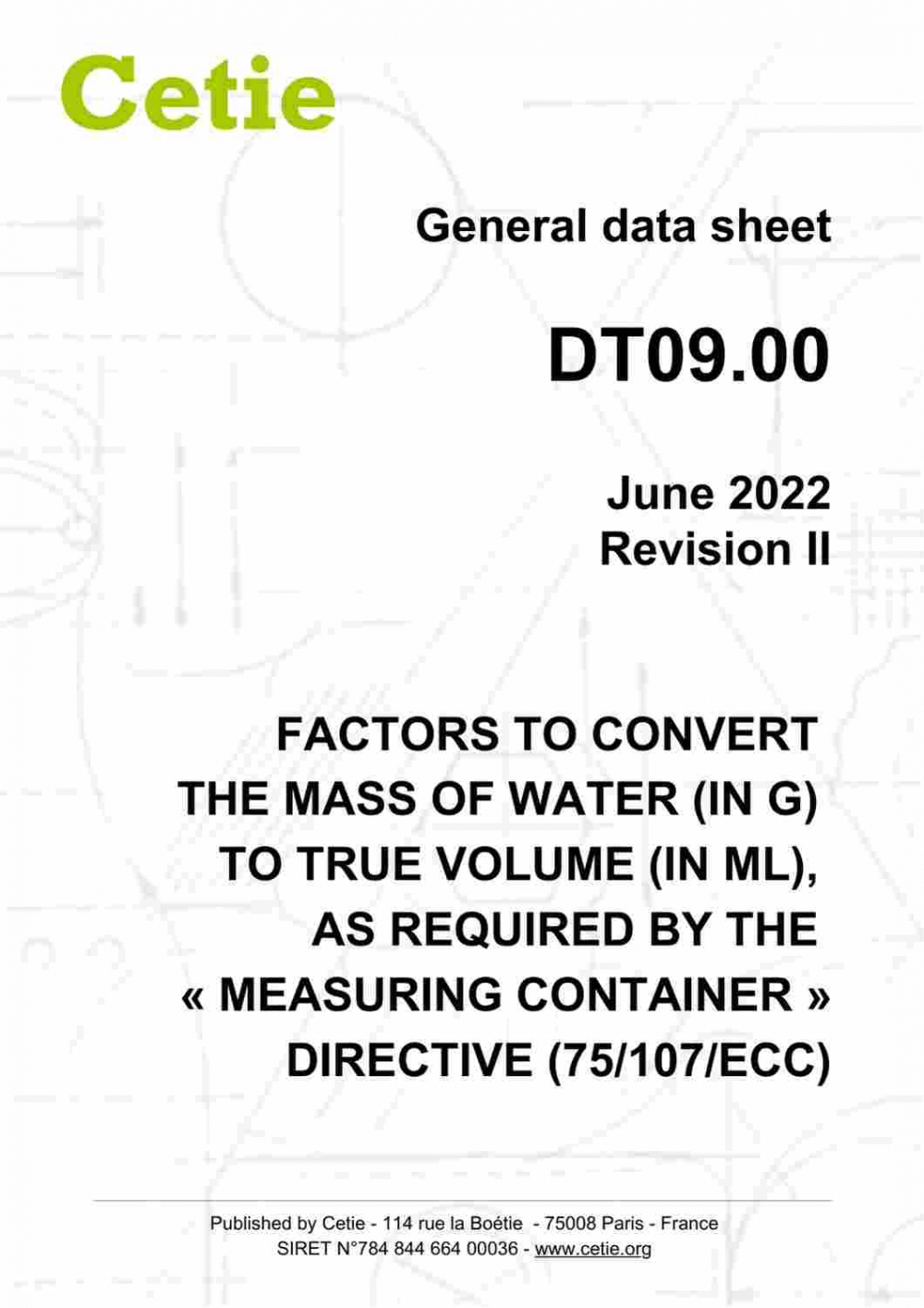DT09.00
Revision II
Published on: 06/06/2022
Factors to convert the mass of water (in g) to true volume (in ml), as required by the « measuring container » Directive (75/107/ECC)
Scope of application
This data sheet is aimed to give information for converting the mass of water (in g) to true volume (in ml) as requested by the measuring container directive (75/107/EEC).
The capacity of a glass container from the mass of water filling the container is calculated and adjusted by a density factor of the water at a given temperature.
This document gives references for tap water. For distilled water, refer to the standard ISO 8106 - GLASS CONTAINERS - DETERMINATION OF CAPACITY BY GRAVIMETRIC METHOD - TEST METHOD
The capacity of a glass container from the mass of water filling the container is calculated and adjusted by a density factor of the water at a given temperature.
This document gives references for tap water. For distilled water, refer to the standard ISO 8106 - GLASS CONTAINERS - DETERMINATION OF CAPACITY BY GRAVIMETRIC METHOD - TEST METHOD
Table of contents
1. Scope
2. Method of measurement
3. Calculation of individual volume
4. Correction factors
5. Example
6. Related documents
6.1. Standards
6.2 Cetie
7. Data sheet history
2. Method of measurement
3. Calculation of individual volume
4. Correction factors
5. Example
6. Related documents
6.1. Standards
6.2 Cetie
7. Data sheet history
History
First edition: 10/1989
Revision I: 09/1993
Revision II: 06/2022 - Revision of the table 'Correction factor K according to temperature'.
First edition: 10/1989
Revision I: 09/1993
Revision II: 06/2022 - Revision of the table 'Correction factor K according to temperature'.
Contributors
ARDAGH GLASS, BA GLASS PORTUGAL, BRITISH GLASS, BUNDESVERBAND GLASINDUSTRIE , CAN PACK, CSVMF, ENCIRC GLASS, GERRESHEIMER BELGIUM, HEINZ GLAS GERMANY, O-I MANUFACTURING FRANCE, O-I MANUFACTURING ITALY, O-I MANUFACTURING UK, SAVERGLASS FRANCE, STOELZLE-OBERGLAS, VERALLIA FRANCE, VERALLIA GERMANY, VETROPACK HOLDING, VIDRALA, WIEGAND-GLASHUTTENWERKE
Document under responsibility of working group:
Glass wg1+4
WG chair: Arnaud JANIN - VERALLIA FRANCE
This permanent group is dedicated to a wide range of topics downstream of the production of glass bottles and jars dedicated to the food and beverage industries:
- Surface treatments, marking, labelling;
- Testing methods (impact, headspace, internal pressure, etc.);
- Nomenclatures (of finishes, jars, bottles, and visual defects, etc.);
- Quality management (food and beverage safety, best practices, regulations).
